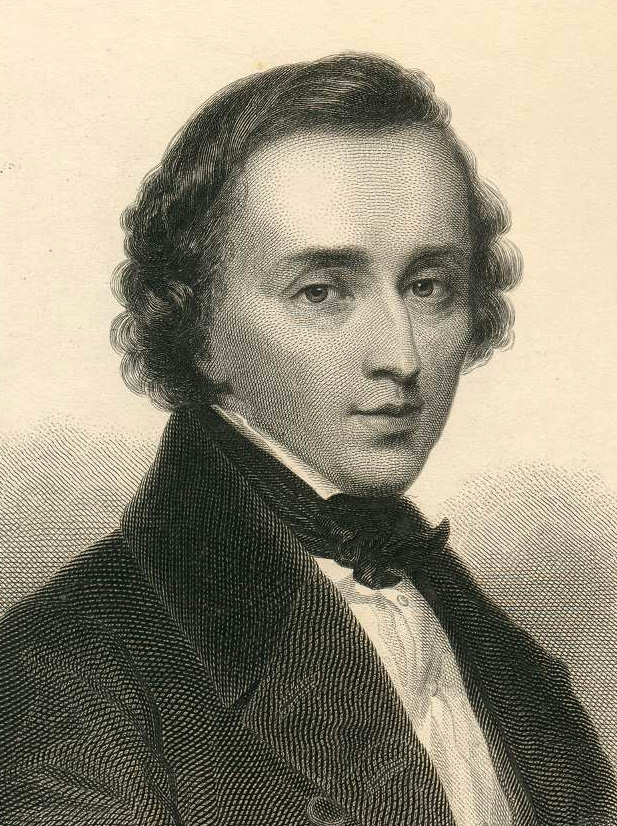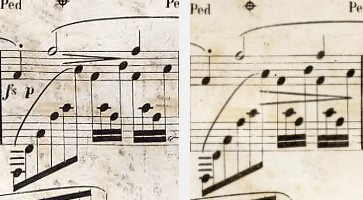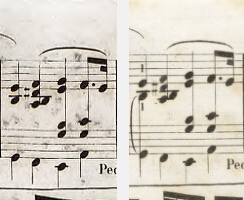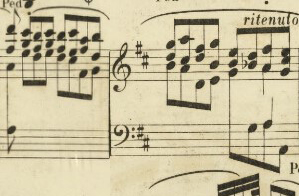Frédéric Chopin’s final piano sonata op. 58 is full of delightful musical moments. Strict music analysts sometimes find fault with its somewhat sprawling form, but for me personally, the b-minor sonata is truly great piano music. Very difficult piano music, too, unfortunately: the technical demands are immense, and hobby pianists quickly reach their limits (so, here is a recording by Dinu Lipatti). The sonata is, though, also not easy from the editorial perspective, an insight that rather unexpectedly hit me as editor of the new Urtext edition (HN 871).
I long pondered this edition, not knowing quite how to mould its complicated transmission into an Urtext form. Since the source situation is detailed in the new edition’s verbal texts [Preface, Remarks], I do not want to duplicate this description. Here, nevertheless, are a few key points regarding the unsatisfactory initial situation.
As was his custom in later years, Chopin notated his sonata in three autographs, a model each for the three first editions published, respectively, in France, Germany and England. He thus created – probably unwittingly – three versions of this sonata. Extant is only the one autograph serving as model for the German Breitkopf & Härtel first edition – a crucial source, of course, especially since the manuscript was notated with great care.
And for the other two versions? The source situation for the English first edition is extremely poor. The autograph is missing, the edition is full of errors and was never proofread by Chopin. That for the French first edition is much more interesting. Although we do not know the autograph on which it was based, we do know that Chopin must have meticulously corrected a first issue of the first edition, because a second issue has a wealth of changes, clarifications and corrections. Taking a closer look at the text and at the two printed issues, we can conclude that the autograph was probably cursorily notated, not even very accurately, showing in addition many blank spots in the more precise marking of articulation/dynamics/pedalling. Chopin must thus have had to intervene in the edition in order to elevate, respectably, the text quality.
Here are a few examples of the differences between the two issues.
Arpeggio markings added:
Dynamics altered:
Fingering added in order to clarify the hand-allocation:
Finally, the clarification of the phrasing for the left hand at the start of the 3rd movement (Chopin apparently wanted to ensure that these are read as legato slurs and not ties).
These examples are only illustrative. Comparing the two issues, we find the wealth of differences, clarifications, corrections, additions to be vast. No doubt about it: this 2nd issue, corrected by Chopin himself, is authorised. And that’s not all: He used this corrected issue in his piano instruction, as evidenced by two extant exemplars in which he again made autograph entries. All these additions and corrections were made after the extant autograph was notated.
To summarise once again: There are three versions of Chopin’s b-minor sonata, namely:
1) an extant, poor ‘English’ version,
2) a ‘German’ version, handed down in a fair-copy autograph,
3) a ‘French’ version, supported by a thoroughly corrected, authorised edition.
What then is an Urtext editor’s task? According to our understanding, we must find the composer’s ‘definitive’ final version. For which version does this apply in the case of the Chopin sonata?
As already stated above, we can rule out the English edition. A better candidate is undoubtedly the French version, since we know that Chopin’s last corrections were incorporated within this text, though we also know that the lost, original autograph had an imperfect, not yet fully elaborated text. Unfortunately, these ‘early’ readings were also transmitted in the French first edition – so we find there a mixture of early and late readings. The German version, on the other hand, has the great advantage of being based on a nearly perfect autograph. This version is extremely consistent, very well authenticated – though Chopin’s final corrections are missing here. Then again, the German version is also the most widely circulated. Most of the 19th– and 20th-century editions are based mainly on this version, and up to now its readings have been disseminated worldwide.
You can anticipate what it all comes down to: The two quintessential sonata versions, the ‘German’ and the ‘French’, must somehow be documented, for both versions are equally authorised – and both versions are equally disadvantaged.
To a hardcore Chopin editor this hardly comes as a shock, for parallel versions repeatedly exist in the Chopin philology, though normally their differences are slight enough that an editor can offer a basic text, documenting the selective differences in footnotes or ossias. This procedure no longer works in the case of the b-minor sonata; the differences between versions are too numerous and fundamental, with the editor running the risk of too-much mixing of the music texts, thus creating a ‘meta version’ that was in fact never extant in any source.
For these reasons, I have dared to publish, for the first time, two versions in the new Urtext edition. In the main text, I edit the sonata according to the revised French first edition, unquestionably the ultimate definitive version. Wherever communicating variants is of interest to the pianist, there are footnotes referring to parallel transmissions. In order, however, to give the ‘German’ version its due, considering its autograph, I have re-edited the entire sonata in the appendix, now strictly as per the autograph. This source edition does not indicate variants, though errors and ambiguities are, of course, corrected or discussed here as well. With this procedure, I was interested in making performable within the context this no less important version.
Finally, one of the most prominent examples of the differences between the two versions. There is in the 1st movement, mm. 74/75, a transition to the exposition’s final group, which follows the autograph in all modern editions:
Though notated in the French first edition is:
There are many indications that this second reading represents an earlier version, which, by the way, is also to be found in the English first edition. When notating the ‘German’ autograph Chopin presumably adapted the passage to the recapitulation version. Many editors therefore consider the ‘French’ version inferior. However, there is no doubt at all that Chopin left this version unchanged in his thorough correction, indeed that he also had his students play it in his piano instruction. Given this initial situation, how can we as modern editors judge that this version is inferior and simply replace it with the ‘German’ version which we find ‘nicer’?
In an interview with Dr Wolf-Dieter Seiffert on the topic ‘Revisions’, we discussed this text, and here you can also hear how the two versions sound:








